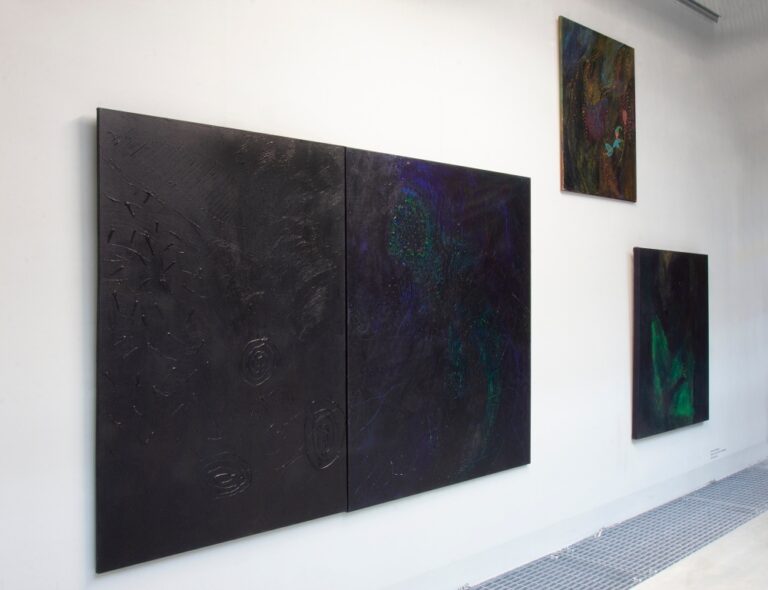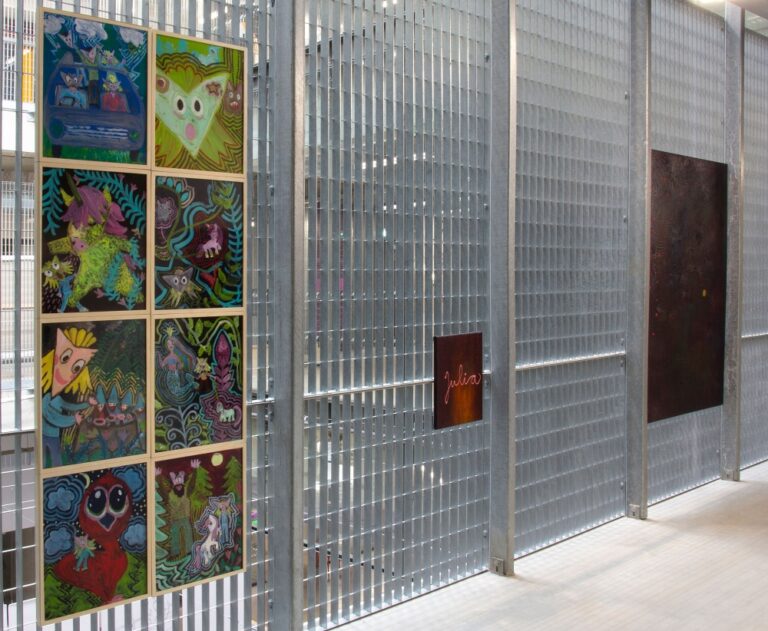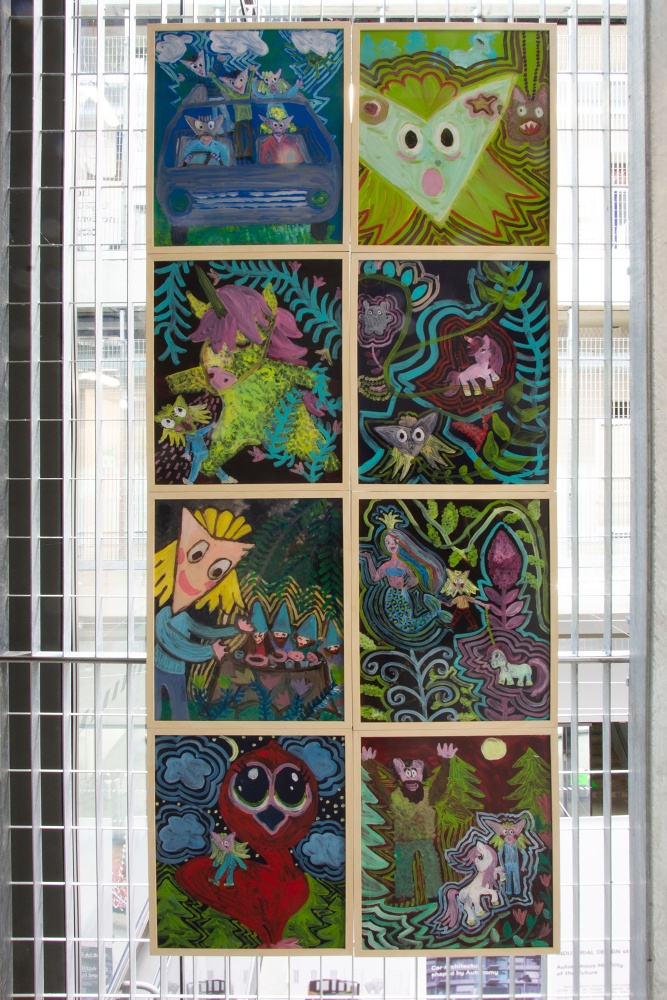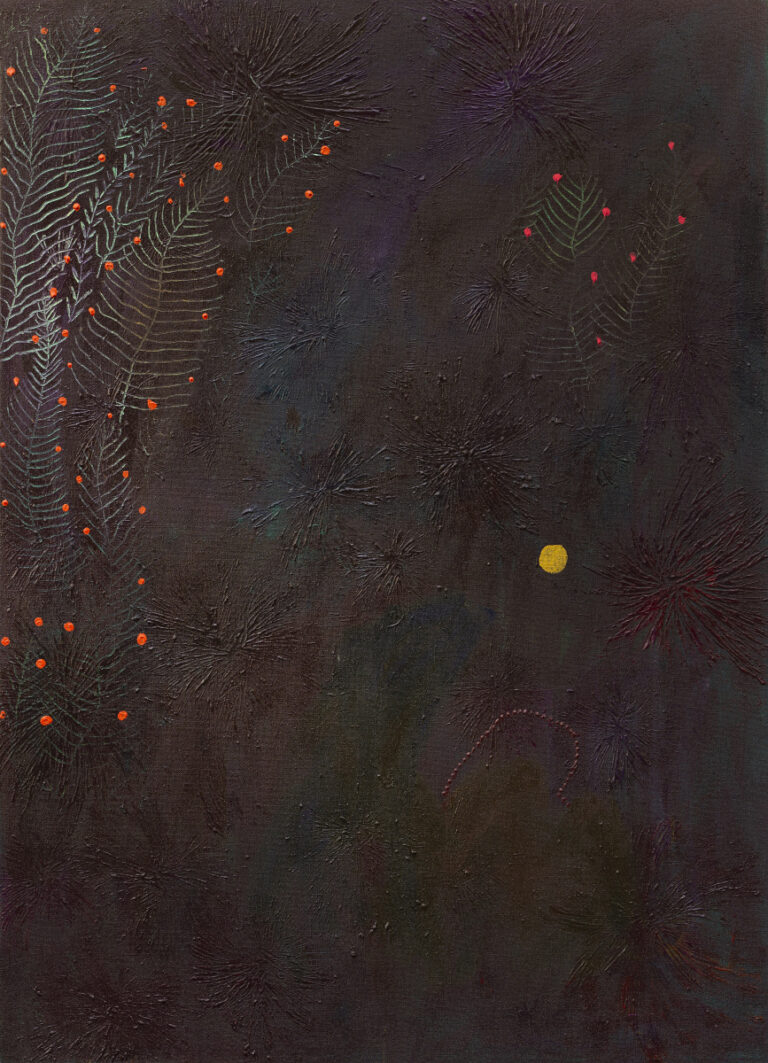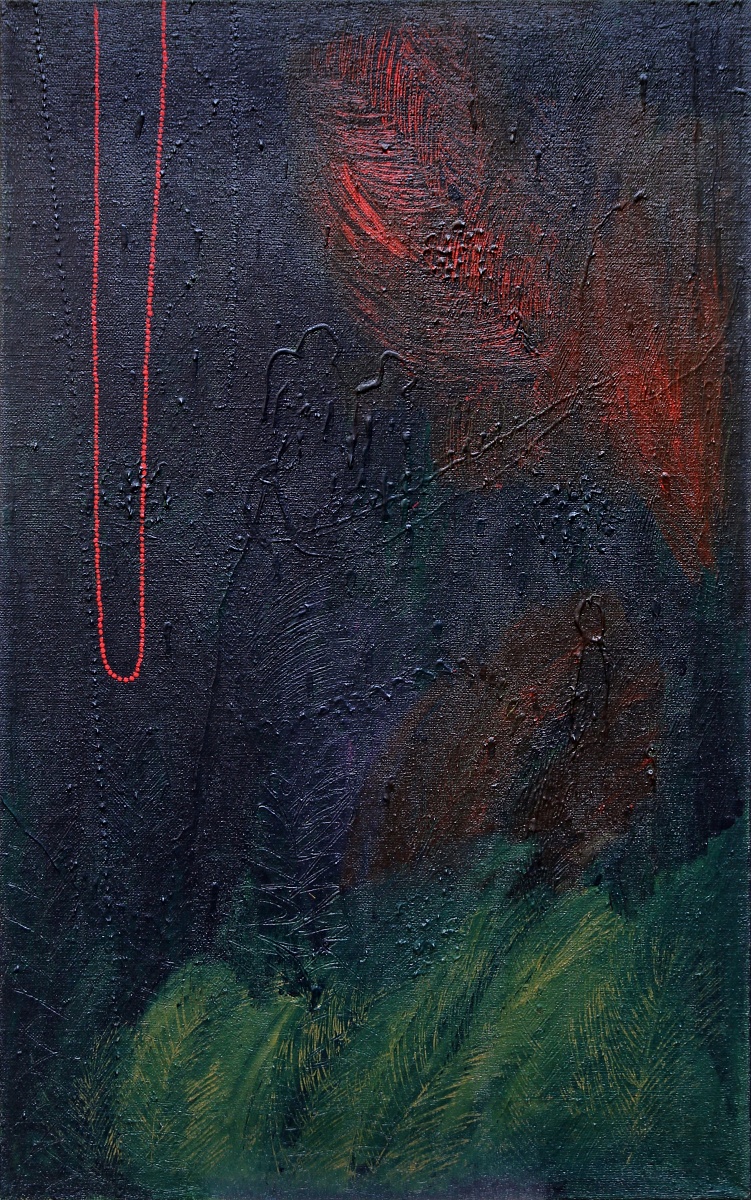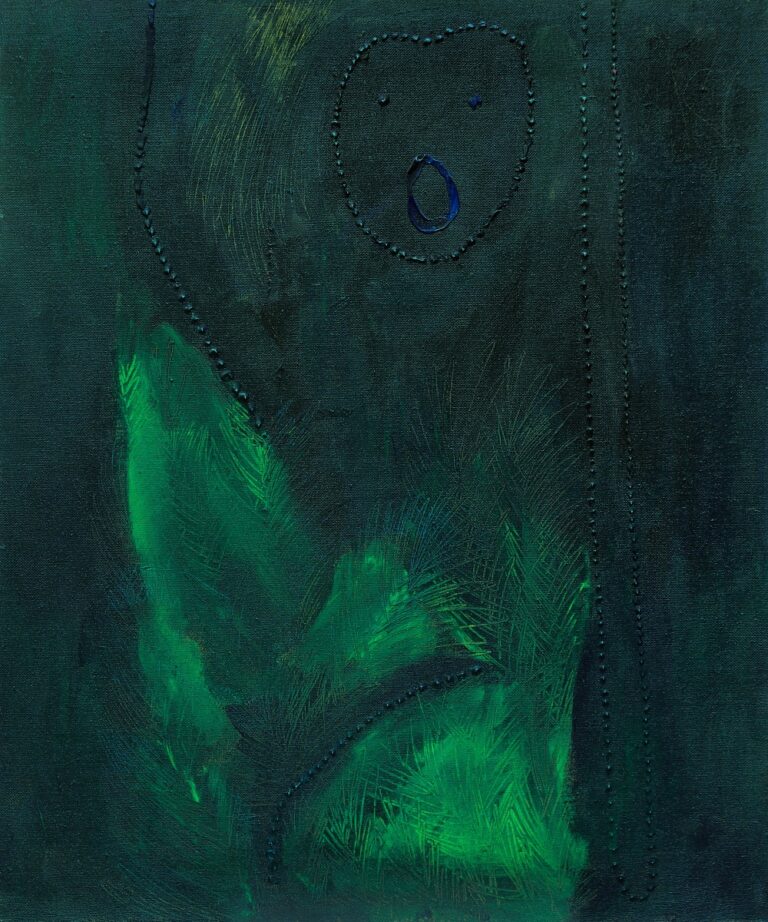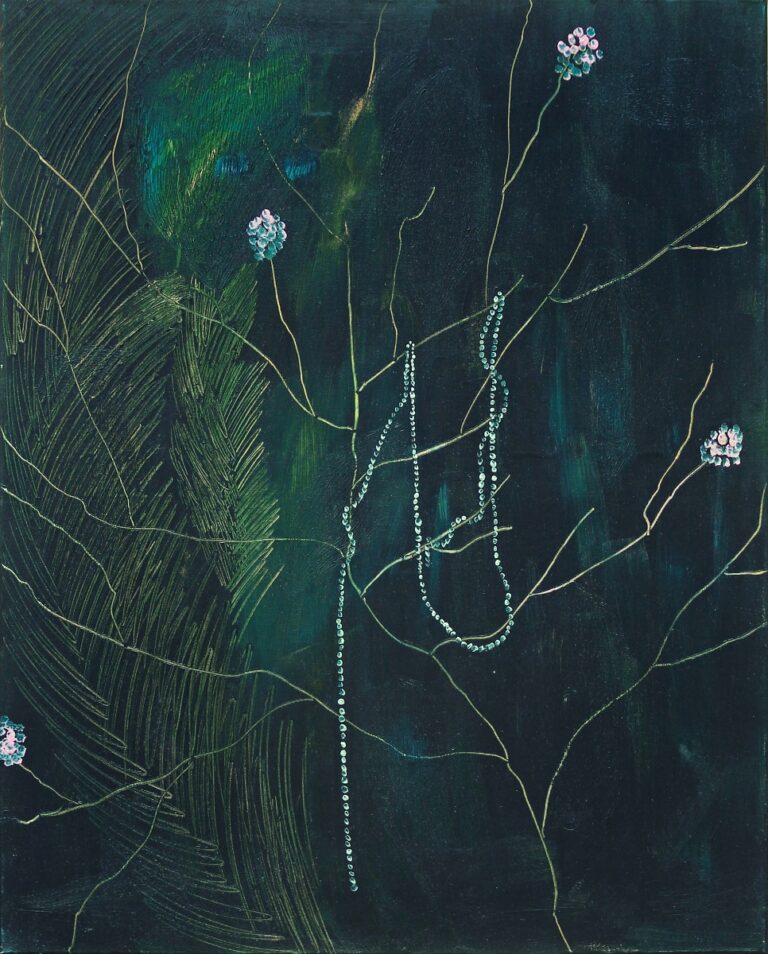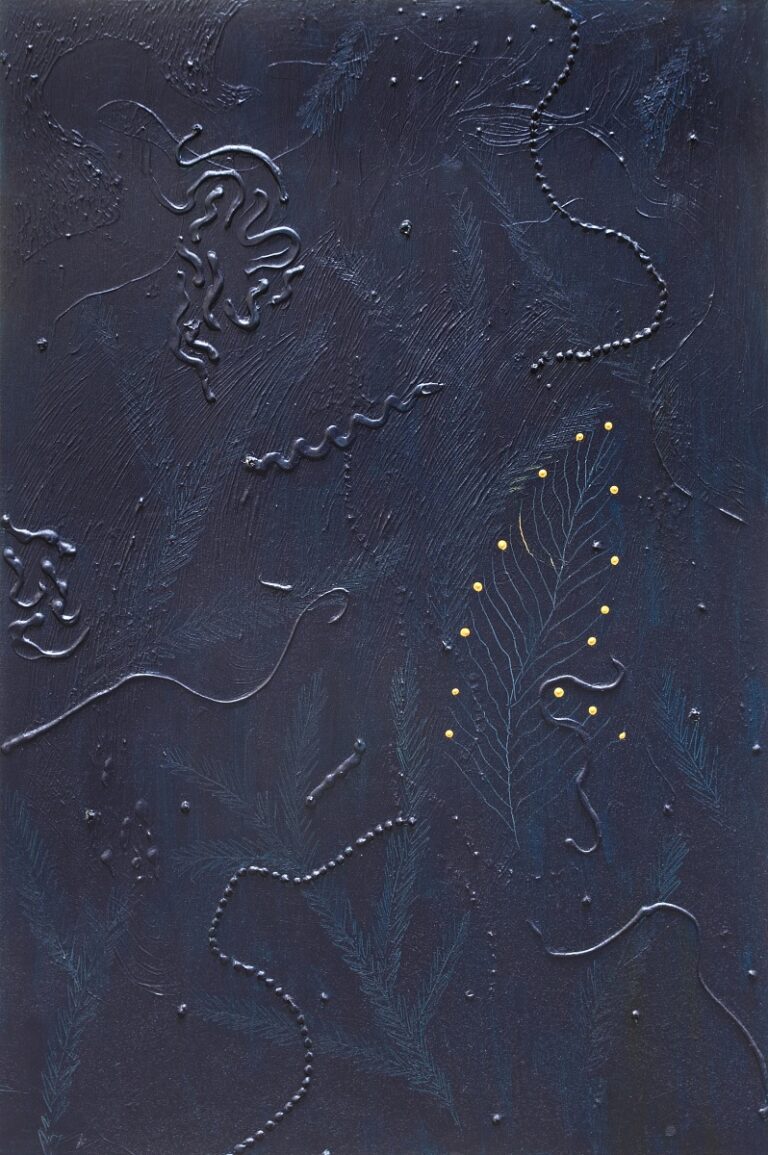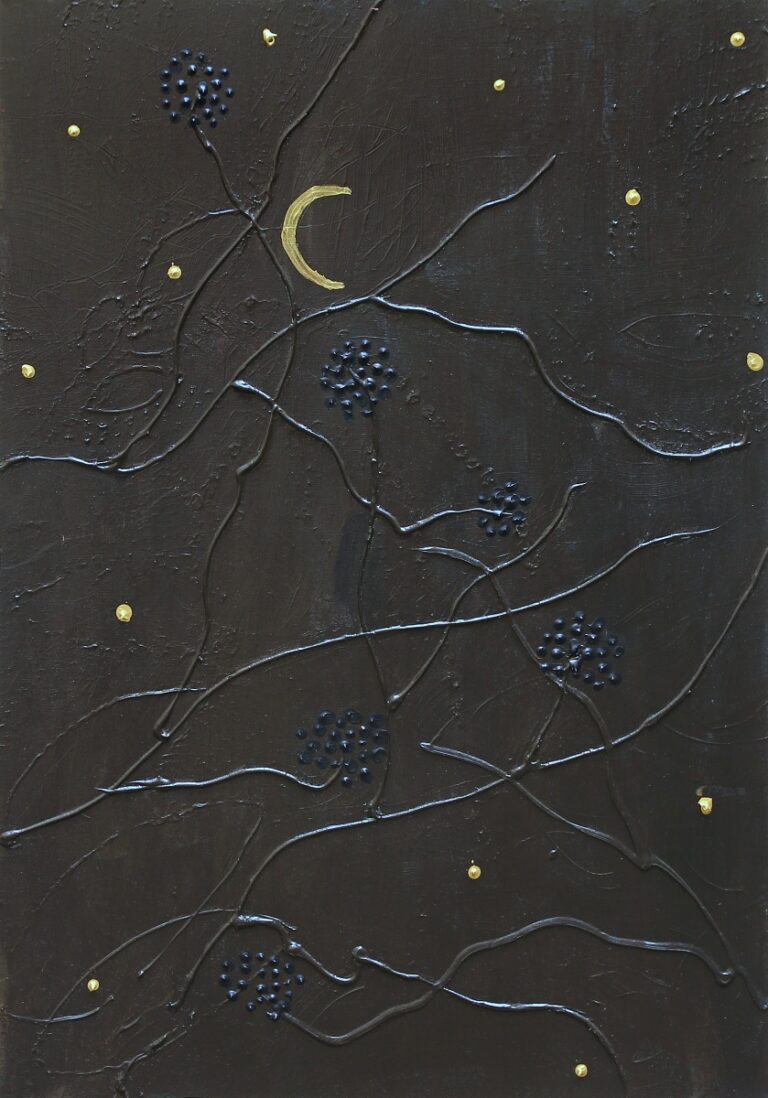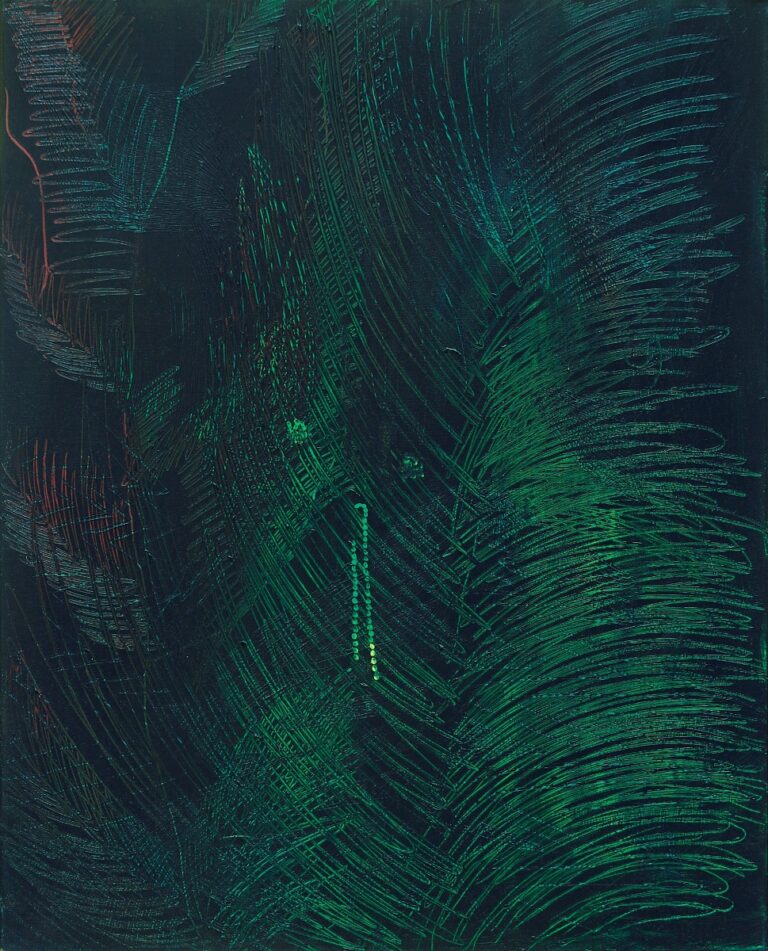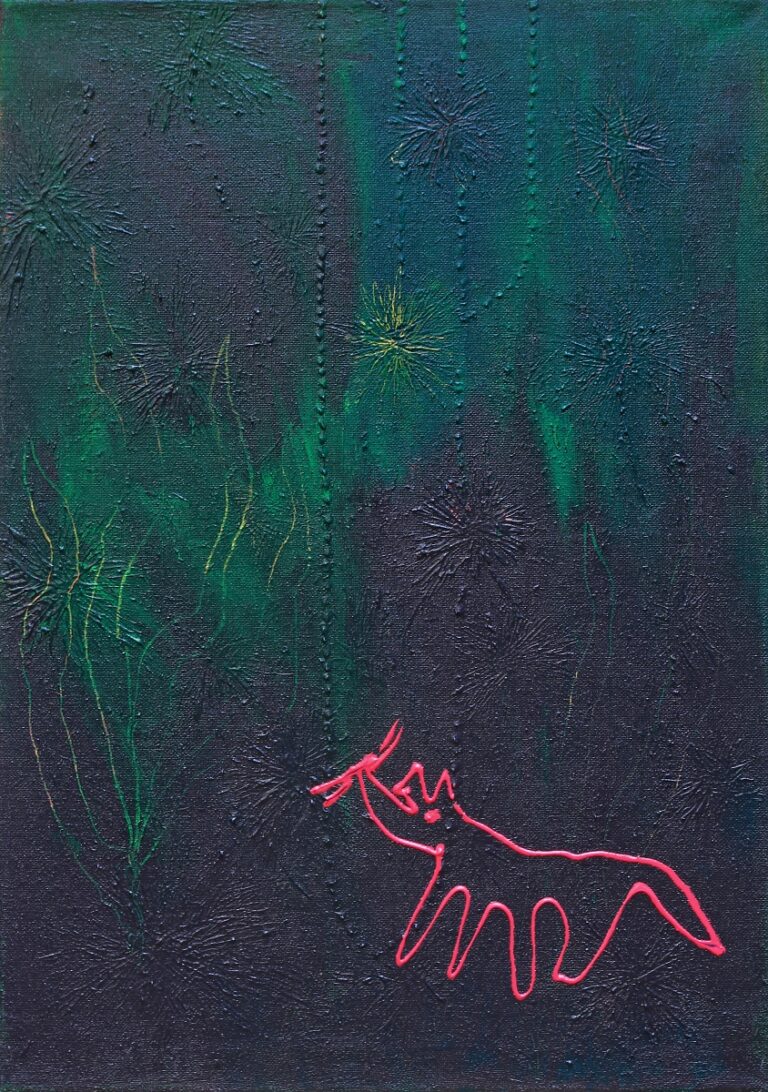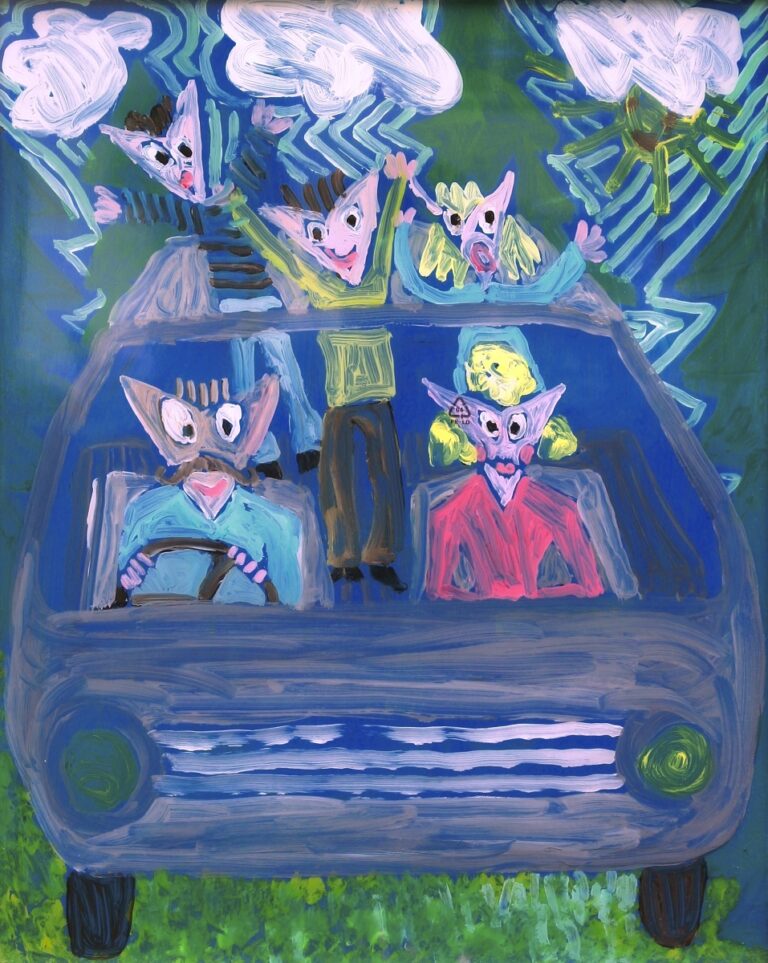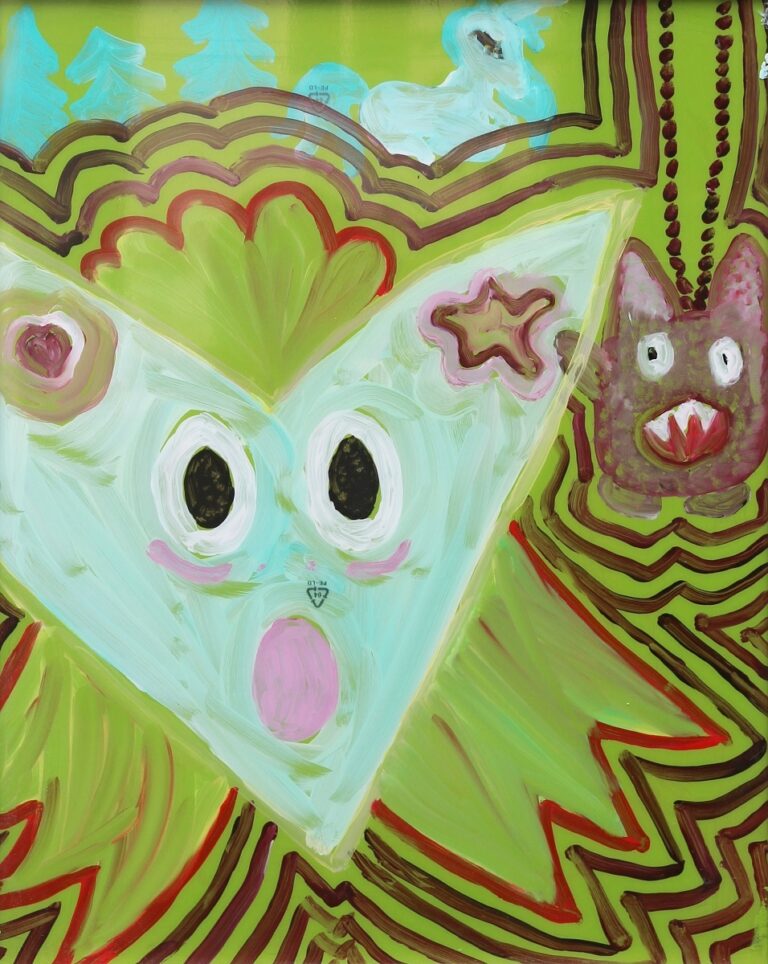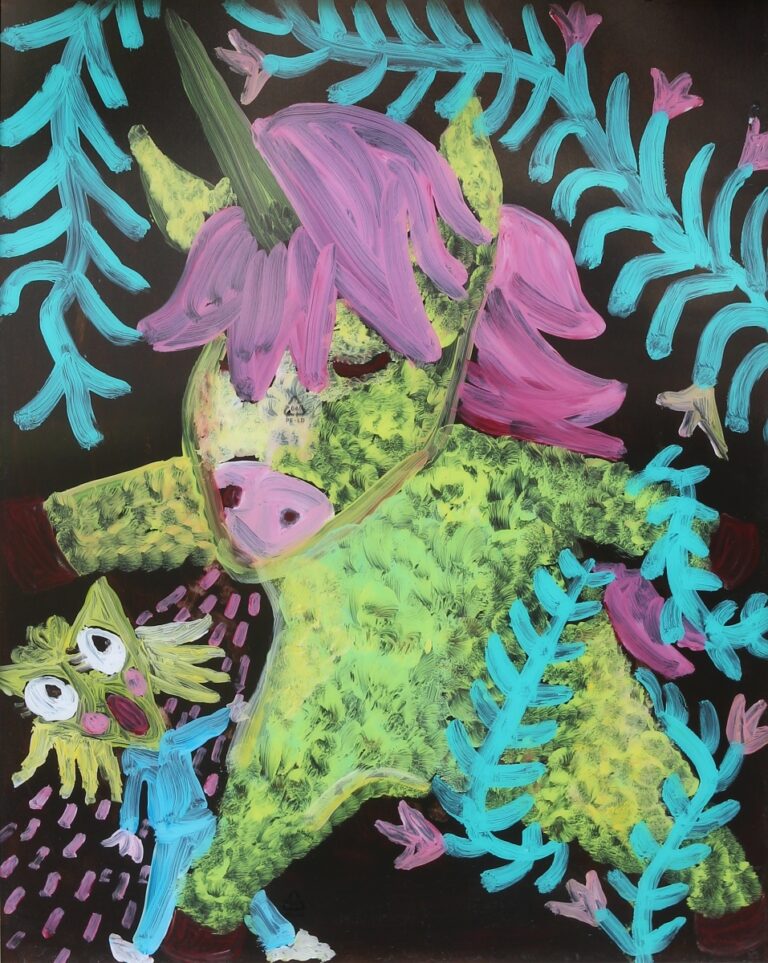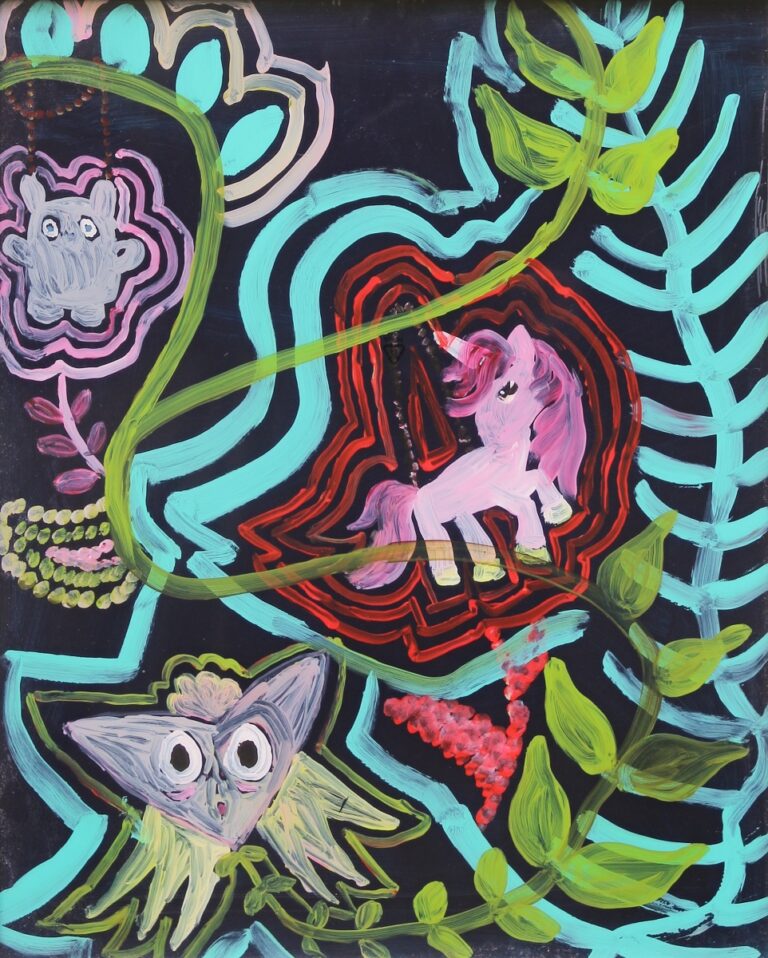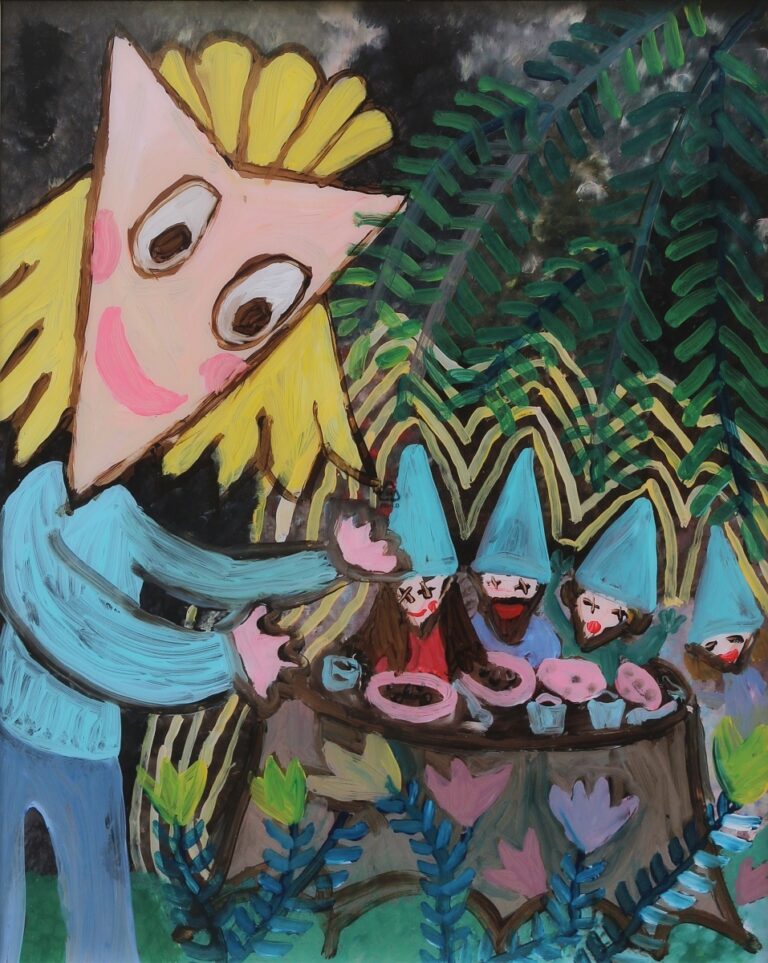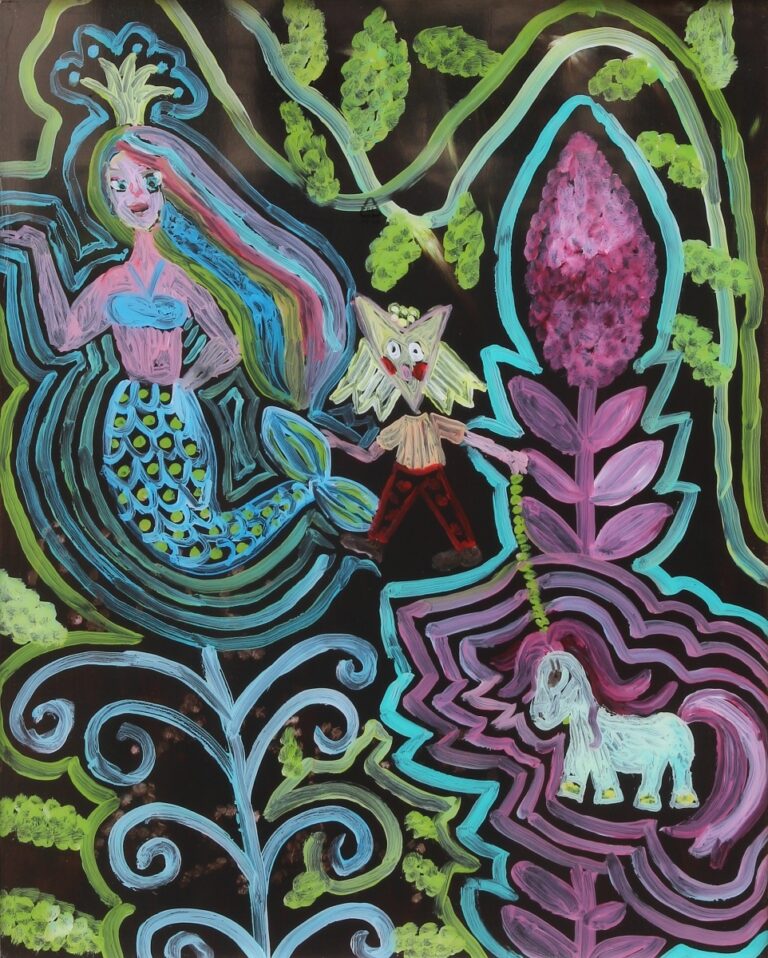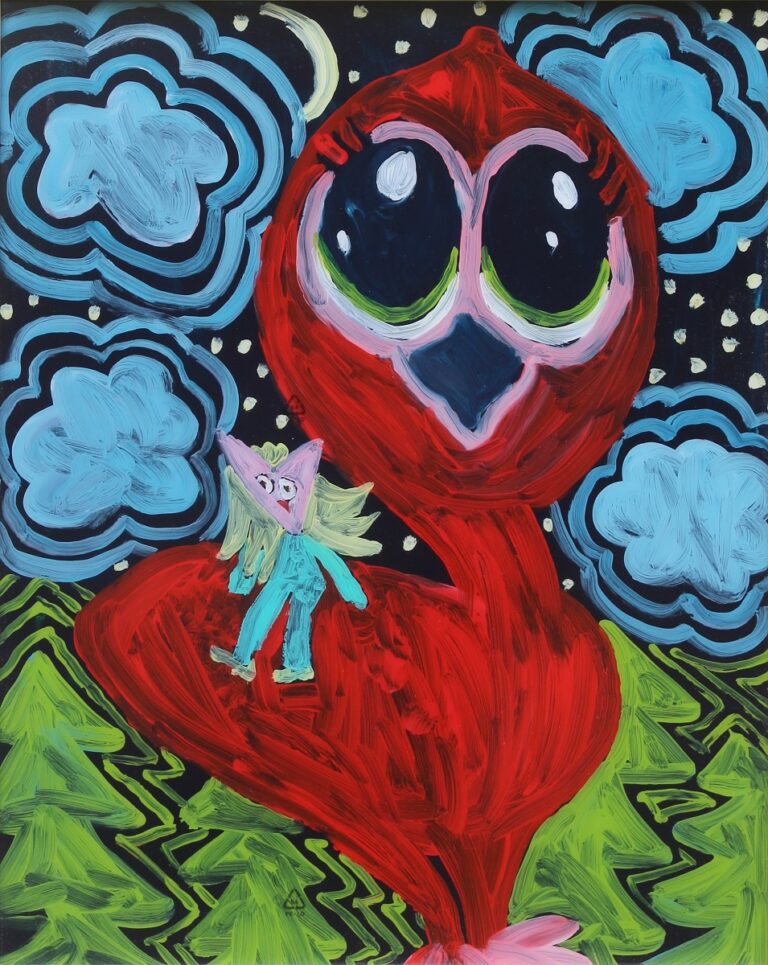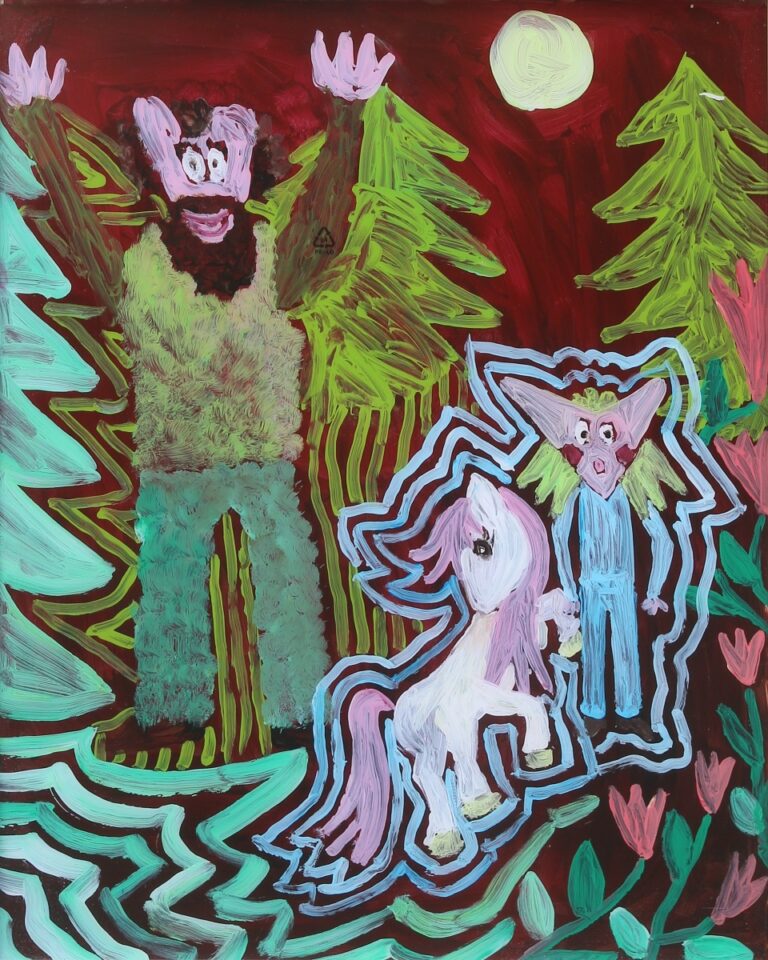Martina Staňková / Dívka v lese / The Girl in the Woods / Diplomanti UMPRUM / 5.6. – 28.6. 2022
Prezentace diplomové práce
Foto: Eva Novotná
Dívka v lese
Anotace:
Diplomová práce Dívka v lese je souborem osmi obrazů – maleb akrylem na plátně, osmi ilustrací technikou podmalby na plexiskle a teoretické reflexe. Obrazy a ilustrace jsou inspirovány jednak průvodními jevy pandemie Covid-19, jednak osobní situací, ale i příběhem Julie, dívky ztracené v lese, jenž proběhl médii. Malby jsou barevně ovlivněny tmou, temným lesem a využívají techniky blízké informelu. Ilustrace jsou narativním, pohádkově fantazijním zpracováním příběhu ztracené dívky. Teoretická část se věnuje možným souvislostem a vlivům. Dotýká se témat řízené a neřízené iniciace a iniciačních rituálů, mýtu a pohádky, tematiky lesa a tmy. Věnuje se romantismu 19. století v jeho recepci krajiny, lesního interiéru a místa romantického hrdiny v ní. Všímá si formální podobnosti obrazů s technikami českého informelu 50. a 60. let. V souvislosti s narativním zpracováním příběhu ukazuje na autora art brut H. Dargera coby tvůrce ilustrované osobní mytologie.
Girl in the Woods
Abstract:
Master´s Thesis Girl in the Woods is a set of eight paintings – acryl on canvas, eight illustrations using the technique of underpainting on plexiglass and its theoretical reflections. The paintings and illustrations were inspired by the accompanying phenomena of the Covid-19 pandemic, as well as by personal situations, but also by the story of Julie, a girl lost in the forest, which ran through the media. Paintings are in its colour spectre influenced by darkness, dark forest and use techniques close to “informel” techniques. The illustrations are a narrative, fairy-tale or fantasy treatment of the story of a lost girl. The theoretical part deals with possible contexts and influences. It touches on the themes of controlled and uncontrolled initiation and initiation rituals, myth and fairy tale, the themes of forest and darkness. It focuses on 19th-century romanticism in its reception of the landscape, the forest interior and the place of the romantic hero in it. Thesis notices the formal similarities between the paintings and the technique of Czech informel of the 50s and 60s. In connection with the narrative treatment of the story, it points to the art brut author H. Darger as the creator of illustrated personal mythology.
